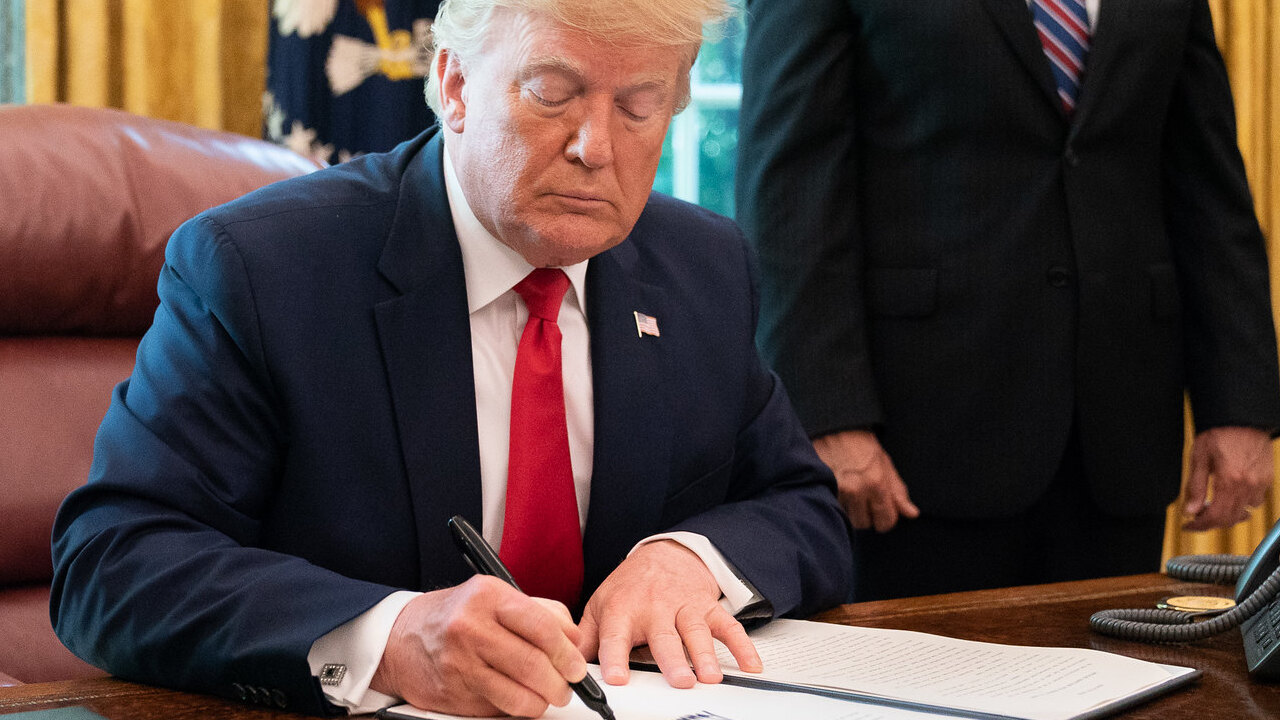As discussed in the prior article, the International Monetary Fund (IMF) found itself with little purpose after President Nixon removed the gold standard, and the Bretton Woods international financial system became defunct. Countries moved from the former fixed exchange rate system to a flexible model, based on fiat currencies, with the U.S. dollar maintaining its place as the world reserve currency. This shift drastically empowered domestic central banks such as the U.S. Federal Reserve, which gained the ability to manipulate their currencies and correct balance of payment problems independently via monetary policy. The IMF, as the guardian and facilitator of the fixed exchange rate system, had lost the primary reason for its existence. However, rather than fading away, the Fund seized upon this opportunity to reinvent itself and adjust its overall scope of responsibility and mandate.
The Fund’s membership had become increasingly diverse during the previous decade due to newly sovereign decolonized states, and gained yet more members during a growing surge of democratic transitions from authoritarianism throughout the 1970s and 1980s. This provided the IMF with an opportunity to regain relevancy, as many of these states experienced tremendous growing pains related to their new economic infrastructure. Specifically, the IMF began intervening in banking and sovereign debt crises endemic to these economies. As these crises are typically more long-term in nature, IMF lending programs became oriented towards overall economic development, rather than emergency cash infusion. Economists Reinhardt and Trebesch effectively encapsulate this paradigm shift, explaining, “Chronic and recurrent IMF clients multiplied, and program duration sometimes spanned more than 20 years. Thus, IMF programs came to have less to do with the original mission of providing temporary liquidity support, and began to resemble long-term development assistance, especially in some of its poorest member countries.”[1] This last part is key: the IMF was no longer simply a facilitator of trade between highly developed states. It had become a primary conduit through which these developed economies could – by virtue of their annual quota subscriptions – funnel developmental loans to financially vulnerable states. The IMF’s new mandate accorded it tremendous power, which a preponderance of evidence has shown was not wielded in a responsible manner.
Rather than promoting true global cooperation and economic stability – the primary motivation of Bretton Wood’s initial authors – the Fund developed into a vehicle designed to export the globalist neoliberal ideology accompanying democracy’s global surge.[2] The mechanism by which the IMF pushed their new agenda – part of the overall “Washington Consensus” on neoliberal policy diffusion[3] [4] – consisted of offering loans on a conditional basis. These conditions typically entailed a complete overhaul of the borrower’s economic and political institutions, forcing states to adopt policies of trade liberalization and political reform. Considering the states in need of the IMF’s assistance were usually in dire economic straits, the IMF’s modus operandi became, essentially, leveraging that economic pain to impose institutional reform at the tip of a sword.[5] Worse, substantial evidence supports that these misguided IMF interventions severely hindered economic development and contributed to significant and lasting political, economic, and social distress.
Chronologically, the IMF’s first test of its new agenda occurred in Latin America, in which at least 22 major stabilization programs were implemented over the course of the 1970s and 1980s.[6] In the aggregate, these programs had detrimental effects upon economic growth due to high costs associated with the forced implementation of deflationary fiscal policy measures.[7] Moreover, these stabilizations were generally unable to control inflation and currency fluctuations in the borrowing states – all while permanently indebting many of them to the Fund.[8] Argentina, one of the largest borrowers, still owes nearly $45 billion to the IMF from loans made in this period.[9] Worse, Argentina gained little from this arrangement; many of its companies were pushed into bankruptcy, and the country’s poverty level climbed to record heights.[10] In Mexico, long-term economic prosperity was dampened due to the effects of the interest they were obligated to pay the Fund. Debt per capita rose at a rate at least three times higher than income per capita, translating to significantly less disposable income for Mexican citizens. This was a significant determinant in the severe subsequent recession of the Mexican economy.[11] Arguably more damaging – and certainly more concerning in terms of the long-term implications – was the IMF’s (with assistance from the U.S. Treasury) protection of international banks from taking portfolio losses. Economist and frequent IMF critic Allan Meltzer explains the ramifications of this: “A bad feature of the Mexican program was its contribution to the belief that international banks enjoy a safety net not available to investors in equities or to purchasers of real assets in foreign countries. The message implicit in these actions was clear to bankers and investors.”[12] What happened in Mexico? The decreased investment in the Mexican economy correlated to a marked increase in bank lending – a perfect illustration of the IMF-induced ‘moral hazard’ endemic to many of the Fund’s loan programs. Similar problems would afflict Southeast Asia in the 1990s.
The Southeast Asian financial crisis began as a currency collapse within Thailand, though rapidly spread to the closely linked economies of Indonesia, Malaysia, the Philippines, and South Korea. The IMF – galvanized by what it saw as another opportunity to flex its new organizational mandate – attempted to force the same mix of neoliberal fiscal and monetary policy upon these states in response to the crisis. However, in contrast to the more advisory and oversight-based role of the IMF in Latin America, the Fund “took the lead in providing credit. In exchange, it has imposed programs requiring governments to reform their financial institutions and to make substantial changes in their economic structures and political behavior.”[13] This was the essence of loan conditionality: a state could either completely restructure its institutions, or face potential economic collapse. The two were not mutually exclusive.
Joseph Stiglitz contributes an effective summary of the step-by-step ramifications of this enforced liberalization: “Money rushed into the country, often financing a consumption binge, and then rushed out; as it left, financial institutions were weakened, often bankrupted, and exchanged rates plummeted, leaving those with dollar-denominated debts hard pressed to meet their obligation.”[14] The result for these struggling Asian states, as Stiglitz explains in further detail, was overall reduction in investment, devastated domestic financial institutions, significant recession, and years of severe economic instability.[15] This, in addition to the looming specter of repaying the IMF loans that spurred the entire process, the interest on which would further limit long-term economic growth. Moreover, many individuals lost their livelihoods as their governments were forced to remove all trade barriers with no protections in place for their domestic producers, as consumers naturally gravitated towards the newly accessible cost-effective markets.[16] The negative effects of these loans were not confined to the economic realm. Within Indonesia in particular, a period of political instability followed the forced reforms, as popular support for their authoritarian government collapsed due to the drop in wages and standard of living. This only exacerbated the economic downturn.[17] Overall – Asian populations developed a justifiably harsh view of the IMF and the western nations that dictated its policy. Interestingly – in an effort to decrease future reliance upon the stigmatized IMF – a Japan-led effort by Southeast Asian states proposed the creation of an “Asian Monetary Fund.” The IMF and the United States used their combined influence to destroy this plan, in a telling illustration of the dependence they hoped to foster.[18]
The third region attracting the IMF’s attention during this period was the bloc of nations developing in the aftermath of the Soviet Union’s disintegration, Russia chief among them. The West had a vested interest in transforming these countries from socialist to capitalist economies, and the IMF seemed to be the least costly mechanism by which this transition could be achieved. The Fund’s relationship with Russia – beginning during the Gorbachev-led glasnost and perestroika reforms in the final years of the USSR – increased exponentially over the course of the 1990’s alongside President Yeltsin’s shock therapy reforms. Nigel Gould-Davis and Ngaire Woods write, “Yeltsin laid out an ambitious program of privatization, liberalization, and stabilization designed to rapidly create a full market economy. With it came an explicit role, and indeed an appeal, for external assistance.”[19] The IMF answered that appeal; once again, on the condition that Yeltsin overhaul Russian institutions to a level even greater than he had initially envisioned. Though this was met with some short-term success, the economy could not sustain such a radical shift, leading to a financial collapse reminiscent of the Soviet economic deterioration a decade prior. The IMF responded to this crisis with yet more loans, which were ultimately wasted on failed attempts to stabilize the ruble, and in many instances were used to advance the interests of Russian oligarchs.[20]
The latter problem of oligarchs preying upon a weakened society once again represents the moral hazard issues prevalent within the Latin American and Southeast Asian financial crises. Moral hazard is perpetuated when a lender’s risk is less than the risk taken by society; in this context, moral hazard occurred when private international lenders became confident – based on their previous bailouts via IMF policies in Mexico and elsewhere – that they would be reimbursed or spared significant financial costs in the event their loans were defaulted upon. As such, spurred on by the IMF’s additional $22 billion loan to the Russian government in 1997, banks were more incentivized to finance riskier investment decisions.[21] The subsequently poor economic policy decisions and the related government corruption deepened the financial crisis to the point that Yeltsin was forced to step down, abdicating his vision for economic liberalization.
Once again, the economy was not the only casualty of IMF mismanagement. The Fund’s agenda directly led to the growth and entrenchment of the Russian oligarchy, which would only grow stronger after the transition from Yeltsin to Vladimir Putin.[22] Writing of the drastically deteriorating situation, Gould-Davies and Wood contend: “The Fund failed on two counts: both in the narrow and the immediate aim to stabilize, and in the long-term goal of fostering the right conditions for reform in Russia…this is exacerbated by chronic state weakness that is manifested in widespread corruption: predatory mafias, tax evasion, and illegal capital outflows. The total cost of corruption has been estimated at $15 billion a year, and officials have acknowledged the misappropriation even of foreign assistance.”[23] Little did these authors know that Vladimir Putin’s ascension would only intensify the degree to which oligarchic interests would dominate Russia, which remains a significant characteristic of Russia to this day.
The IMF’s financial interventions were, to put it mildly, ineffective in their goals of financial stabilization and long-term economic growth. Meltzer concludes, “The IMF had more success in the 1960s, when it limited its efforts to helping countries with current-account deficits. As the Fund’s scope expanded, its record became ambiguous or worse.”[24] Some might say that the IMF’s record is more in the vein of worse than ambiguous. Wholistic looks at the Fund’s lending program provide clear empirical evidence in support of the idea that IMF loans cause a reduction in economic growth, in the short and long term.[25] [26] Further evidence supports the assertion that these failures are predicated upon the IMF’s loan conditionality, its inducement of moral hazard, and its agenda-driven policy advice.[27] Detrimental effects of the conditional lending program range beyond pure economic considerations; specific to Latin America, loans have been linked to increased state repression capabilities. In Mexico and Bolivia in particular, related periods of extreme social unrest and protest were followed by severe governmental crackdowns and political upheaval. And – in findings that show the degree to which the IMF’s neoliberal imposition produces counterproductive effects – citizens in the vast majority of Latin American countries developed stronger preferences for authoritarian government and a distaste for the democratic ideals being forced upon them.[28] Stiglitz, isolating what seems to be the main causal factor behind the IMF’s myriad failures, eruditely concludes, “In the future, it should rely more on evidence and less on ideology in developing its policy agenda. The IMF’s stance on capital-market liberalization has, in many circles, undermined its credibility.”[29]
Yet, even amongst the subsequent clamor for IMF reform and constraints on its power, the Fund only continued to accumulate power and influence — especially when the world was taken unaware by the 2008 financial crisis.
Photo by Nathaniel_U, Attribution 2.0 Generic (CC BY 2.0).
[1] Carmen M. Reinhart and Christopher Trebesch, “The International Monetary Fund: 70 Years of Reinvention,” The Journal of Economic Perspectives, Volume 30, Issue 1, 2016, p. 5.
[2] Termed the “Third Wave of Democratization’, see: Samuel Huntington, The Third Wave: Democratization in the Late Twentieth Century, (University of Oklahoma Press, 1991).
[3] For more information on this ideology’s principles, see: John Williamson, “The Washington Consensus and Beyond,” Economic and Political Weekly, Volume 38, Issue 15, 2003, pp. 1475-1481.
[4] For an analysis of the WC’s popularity and eventual waning influence, see: Alan Taylor and Antoni Estevadeordal, “IS THE WASHINGTON CONSENSUS DEAD? GROWTH, OPENNESS, AND THE GREAT LIBERALIZATION, 1970s-2000s,” National Bureau of Economic Research, Working Paper 14264, 2008, pp. 1-44.
[5] Ayse Kaya and Mike Reay, “How Did the Washington Consensus Move Within the IMF? Fragmented Change from the 1980’s to the aftermath of the 2008 Crisis,” Review of International Political Economy, Volume 26, Issue 3, 2019, pp. 394-409.
[6] A. Velasco and A. Tornell, “Fiscal discipline and the choice of a nominal anchor in stabilization,” Journal of International Economics, Vol. 46 (1), pp. 1–30.
[7] Michael Hutchinson and Ilan Noy, “Macroeconomic effects of IMF-sponsored programs in Latin America: output costs, program recidivism and the vicious cycle of failed stabilizations,” Journal of International Money and Finance, 22:7, (2003): pp. 991-1014.
[8] Allan H. Meltzer, “What’s Wrong with the IMF? What Would Be Better?” The Independent Review 4, no. 2, 1999, pp. 201–215.
[9] “Financial Data by Country: Argentina.” International Monetary Fund (Accessed 11 December 2021).
[10] Stephen Nelson, The Currency of Confidence: How Economic Beliefs Shape the IMF’s Relationship with Its Borrowers, Cornell University Press, 2017.
[11] Meltzer, 1999.
[12] Meltzer, 1999, p. 206.
[13] Martin Feldstein. “Refocusing the IMF.” Foreign Affairs 77: 2 (1998) pp. 20-33.
[14] Joseph Stiglitz, “CAPITAL-MARKET LIBERALIZATION, GLOBALIZATION, AND THE IMF,” Oxford Review of Economic Policy 20, no. 1 (2004): pp. 57–71
[15] Stiglitz, 2004.
[16] Margaret P. Karns, Karen A. Mingst, and Kendall W. Stiles, International Organizations: The Politics and Processes of Global Governance, Third Edition, Boulder, Colorado: Lynne Rienner Publishers, Inc., 2015.
[17] Paul Mosley, “The IMF After the Asian Crisis: Merits and Limitations of the ‘Long-Term Development Partner’ Role,” World Economy 24, no. 5, 2001, pp. 597–629.
[18] Takatoshi Ito, “Can Asia Overcome the IMF Stigma?” The American Economic Review 102, no. 3, 2012, pp. 198–202.
[19] Nigel Gould-Davies and Ngaire Woods. ‘Russia and the IMF.” International Affairs, 75: 1, 1999, p. 5.
[20] Ibid.
[21] Meltzer, 1999.
[22] Gould-Davies and Woods, 1999.
[23] Ibid, p. 20.
[24] Meltzer, 1999, p. 209.
[25] Adam Przeworski and James Raymond Vreeland, “The Effect of IMF Programs on Economic Growth,” Journal of Development Economics 62, no. 2, 2000, pp. 385–421
[26] Joseph E Stiglitz, Globalization and Its Discontents. 1st ed. New York: W.W. Norton, 2002.
[27] Axel Dreher, “IMF and Economic Growth: The Effects of Programs, Loans, and Compliance with Conditionality,” World development 34, no. 5 (2006): 769–788.
[28] Chelsea Brown, “Democracy’s Friend or Foe? The Effects of Recent IMF Conditional Lending in Latin America.” International political science review 30, no. 4 (2009): pp. 431–457.
[29] Stiglitz, 2004, pp. 65-66.
Jack McPherrin is the managing editor of 1818 Magazine. Jack works as the research editor for the Editorial Department of The Heartland Institute, where he also contributes to the mission of the Socialism Research Center as a research fellow. He is in the final stages of completing his Master’s Degree in International Affairs from Loyola University-Chicago, where his myriad research interests primarily encompass domestic and international economic policy, global institutions, authoritarian regimes, and foreign affairs - with a particular emphasis upon Russia and China. Prior to his graduate pursuits, Jack spent six years in the private sector after graduating from Boston College with a dual Bachelor's Degree in Economics and History. He currently resides in the Lincoln Park neighborhood of Chicago, a few short miles from where he was raised.








